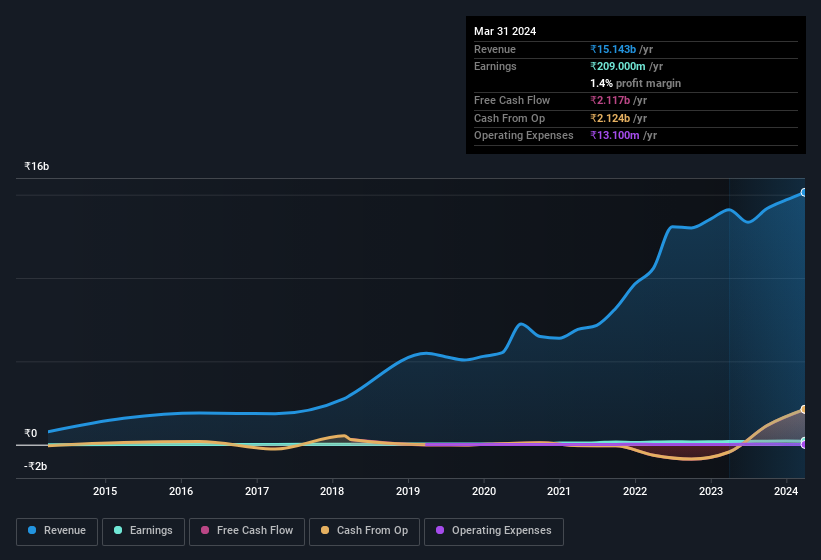- India
- /
- Trade Distributors
- /
- NSEI:ANMOL
We Think Anmol India's (NSE:ANMOL) Profit Is Only A Baseline For What They Can Achieve
Anmol India Limited (NSE:ANMOL) just reported healthy earnings but the stock price didn't move much. Investors are probably missing some underlying factors which are encouraging for the future of the company.
View our latest analysis for Anmol India

Zooming In On Anmol India's Earnings
One key financial ratio used to measure how well a company converts its profit to free cash flow (FCF) is the accrual ratio. To get the accrual ratio we first subtract FCF from profit for a period, and then divide that number by the average operating assets for the period. You could think of the accrual ratio from cashflow as the 'non-FCF profit ratio'.
That means a negative accrual ratio is a good thing, because it shows that the company is bringing in more free cash flow than its profit would suggest. That is not intended to imply we should worry about a positive accrual ratio, but it's worth noting where the accrual ratio is rather high. Notably, there is some academic evidence that suggests that a high accrual ratio is a bad sign for near-term profits, generally speaking.
Anmol India has an accrual ratio of -1.61 for the year to March 2024. Therefore, its statutory earnings were very significantly less than its free cashflow. To wit, it produced free cash flow of ₹2.1b during the period, dwarfing its reported profit of ₹209.0m. Given that Anmol India had negative free cash flow in the prior corresponding period, the trailing twelve month resul of ₹2.1b would seem to be a step in the right direction.
Note: we always recommend investors check balance sheet strength. Click here to be taken to our balance sheet analysis of Anmol India.
Our Take On Anmol India's Profit Performance
Happily for shareholders, Anmol India produced plenty of free cash flow to back up its statutory profit numbers. Because of this, we think Anmol India's underlying earnings potential is as good as, or possibly even better, than the statutory profit makes it seem! Better yet, its EPS are growing strongly, which is nice to see. At the end of the day, it's essential to consider more than just the factors above, if you want to understand the company properly. In light of this, if you'd like to do more analysis on the company, it's vital to be informed of the risks involved. While conducting our analysis, we found that Anmol India has 1 warning sign and it would be unwise to ignore it.
This note has only looked at a single factor that sheds light on the nature of Anmol India's profit. But there is always more to discover if you are capable of focussing your mind on minutiae. For example, many people consider a high return on equity as an indication of favorable business economics, while others like to 'follow the money' and search out stocks that insiders are buying. So you may wish to see this free collection of companies boasting high return on equity, or this list of stocks with high insider ownership.
New: Manage All Your Stock Portfolios in One Place
We've created the ultimate portfolio companion for stock investors, and it's free.
• Connect an unlimited number of Portfolios and see your total in one currency
• Be alerted to new Warning Signs or Risks via email or mobile
• Track the Fair Value of your stocks
Have feedback on this article? Concerned about the content? Get in touch with us directly. Alternatively, email editorial-team (at) simplywallst.com.
This article by Simply Wall St is general in nature. We provide commentary based on historical data and analyst forecasts only using an unbiased methodology and our articles are not intended to be financial advice. It does not constitute a recommendation to buy or sell any stock, and does not take account of your objectives, or your financial situation. We aim to bring you long-term focused analysis driven by fundamental data. Note that our analysis may not factor in the latest price-sensitive company announcements or qualitative material. Simply Wall St has no position in any stocks mentioned.
About NSEI:ANMOL
Mediocre balance sheet with low risk.
Similar Companies
Market Insights
Community Narratives



